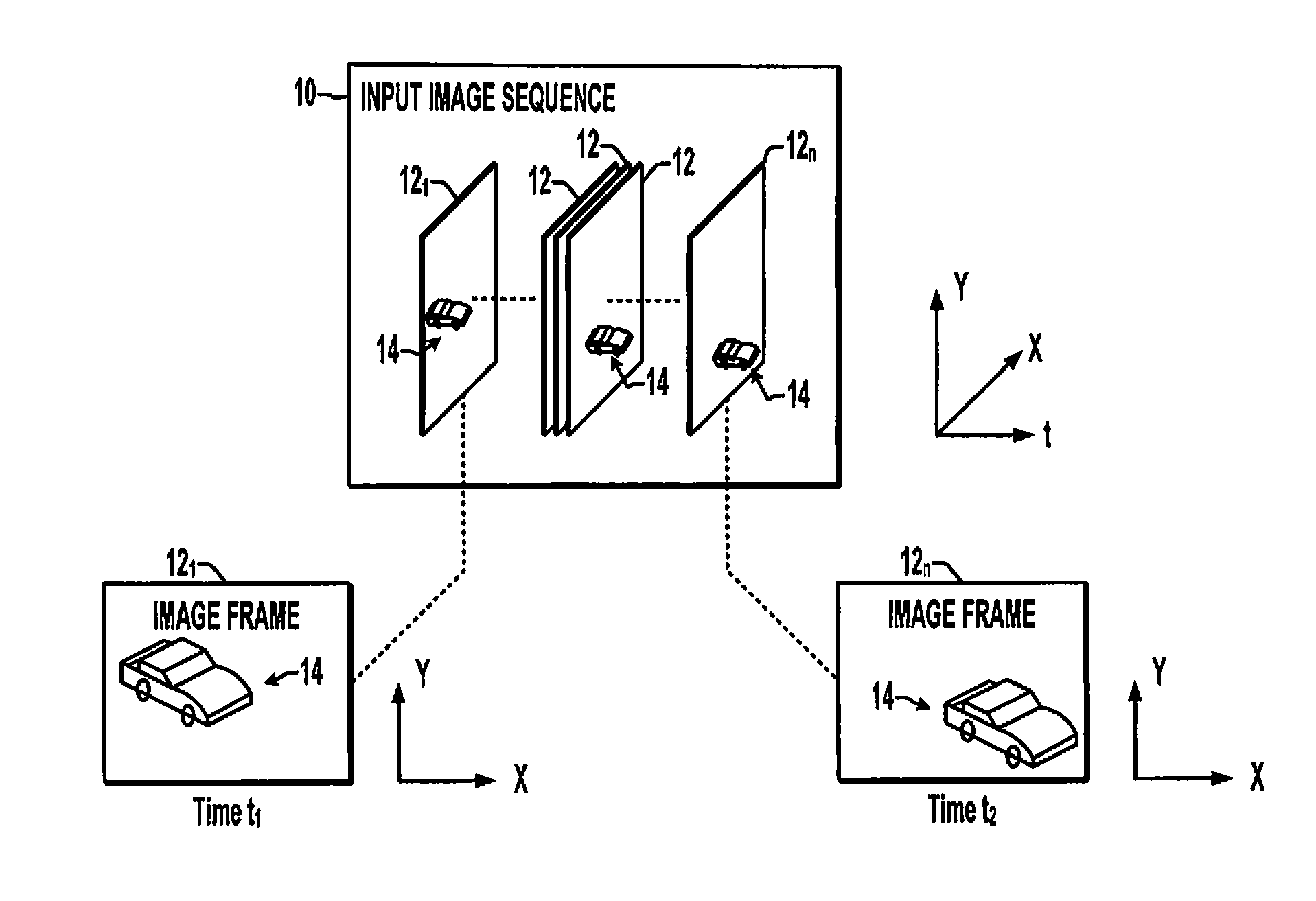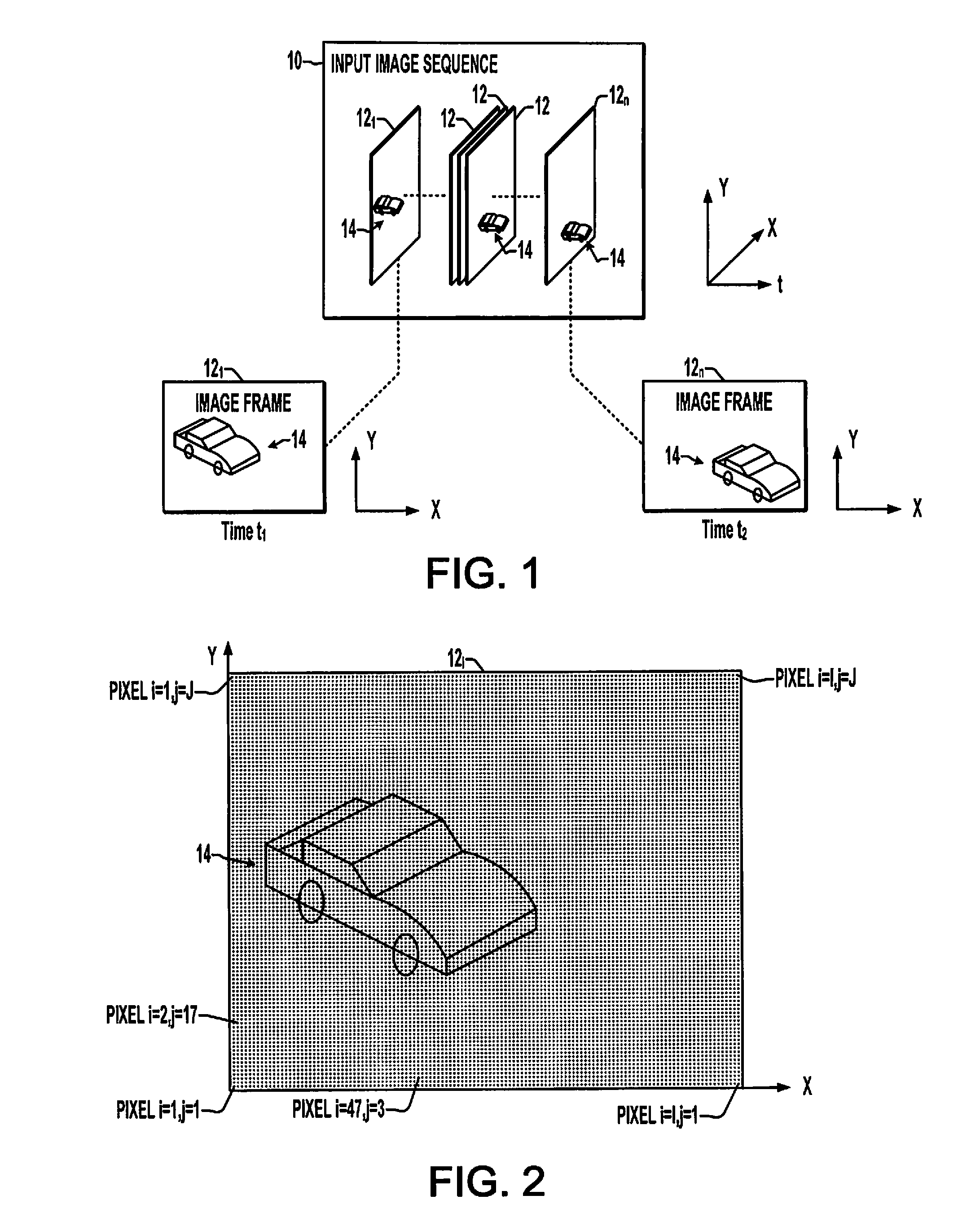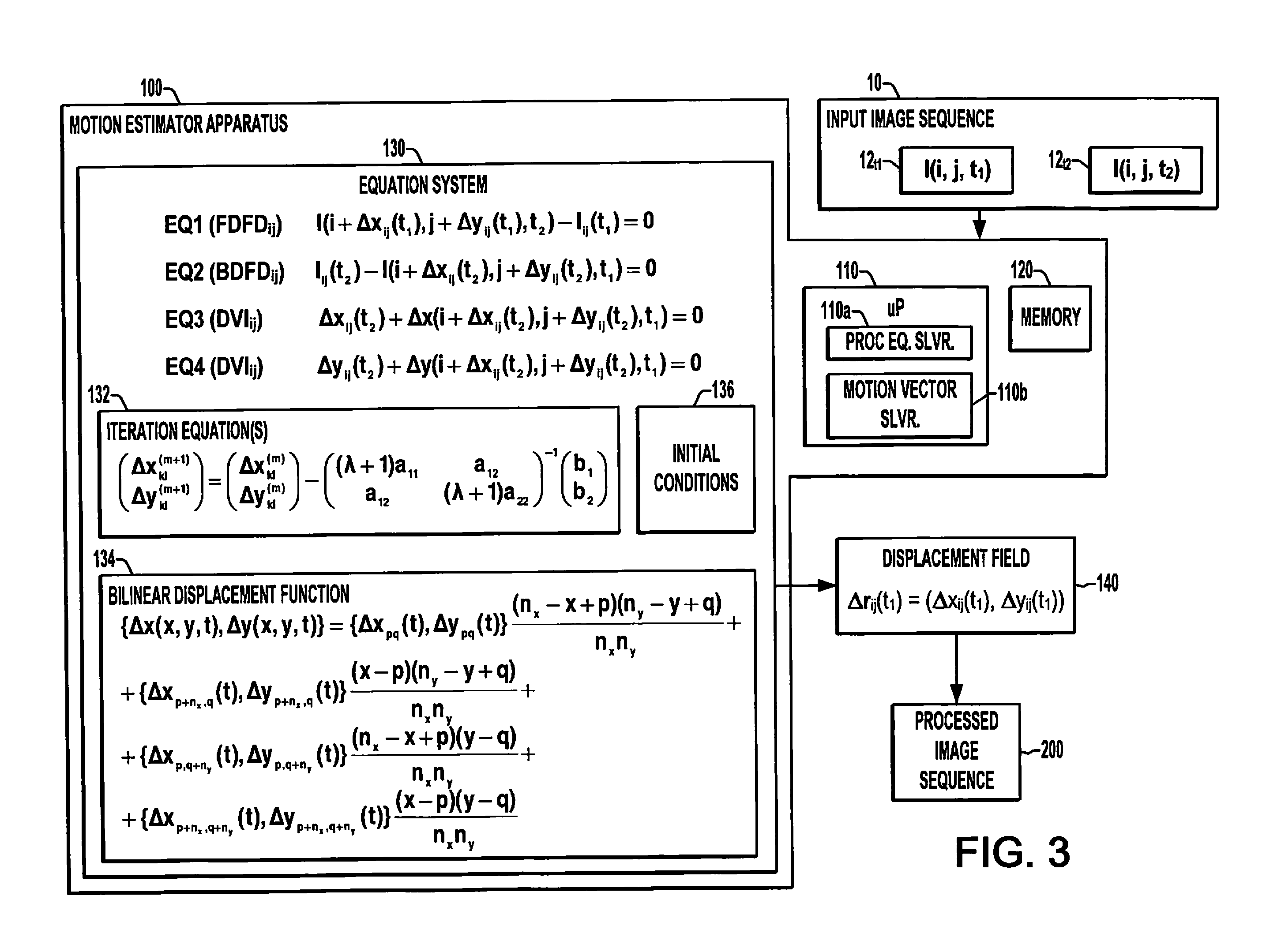Method and apparatus for displacement determination by motion compensation
- Summary
- Abstract
- Description
- Claims
- Application Information
AI Technical Summary
Benefits of technology
Problems solved by technology
Method used
Image
Examples
Embodiment Construction
[0025]One or more embodiments or implementations are hereinafter described in conjunction with the drawings, where like reference numerals refer to like elements throughout, and where the various features are not necessarily drawn to scale.
[0026]FIG. 1 illustrates an input image sequence 10 with a plurality of image frames 12 including a first image frame 121, a final frame 12n, and one or more intervening frames 12 wherein the input sequence 10 can include any number “n” frame 12, where n is an integer greater than 1. As seen in FIG. 2, each individual image frame 12i includes an integer number of pixel data values, each corresponding to a two-dimensional pixel location in an X-Y plane, where each pixel location is indicated with an integer subscript index “i” indicating an X direction pixel index (1≦i≦I) and an integer subscript index “j” indicating a Y direction pixel index (1≦j≦J). In the illustrated example, moreover, the image data represents optical (e.g., visible) data, such...
PUM
 Login to View More
Login to View More Abstract
Description
Claims
Application Information
 Login to View More
Login to View More - R&D
- Intellectual Property
- Life Sciences
- Materials
- Tech Scout
- Unparalleled Data Quality
- Higher Quality Content
- 60% Fewer Hallucinations
Browse by: Latest US Patents, China's latest patents, Technical Efficacy Thesaurus, Application Domain, Technology Topic, Popular Technical Reports.
© 2025 PatSnap. All rights reserved.Legal|Privacy policy|Modern Slavery Act Transparency Statement|Sitemap|About US| Contact US: help@patsnap.com



